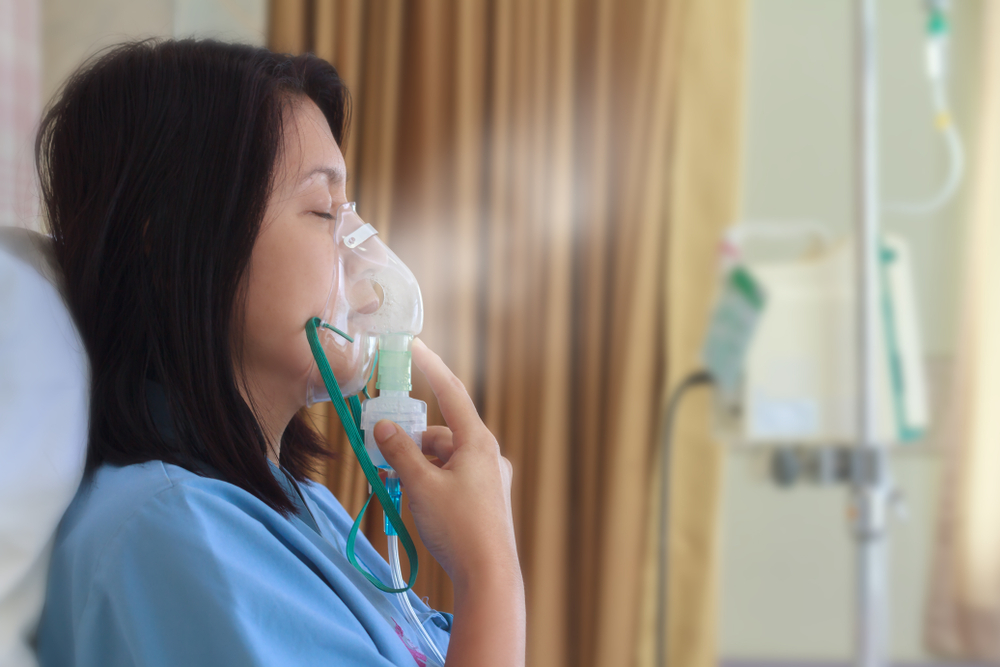A new position statement from the Thoracic Society of Australia and New Zealand provides up-to-date guidelines for safely performing sputum induction.
Sputum induction is widely used in health practice to obtain samples from the lower airways, typically for investigation of infection and inflammation. Common clinical indications include microbial surveillance in cystic fibrosis and other pulmonary infections, diagnosis of tuberculosis and monitoring airway inflammation. Sputum induction is based on the delivery of osmotically active aerosols like hypertonic saline to the lower airways. Once deposited on the airway surface, the osmotically active particles increase the hydration of the airway surface liquid through transepithelial water flux from the airway epithelial cells to the airway surface. Increased osmolarity of the airway surface liquid is also thought to increase mucosal vascular permeability, enhance the production of mucus by submucosal glands, and increase ciliary beat frequency. These mechanisms facilitate mucus clearance and sputum production.
Although broadly considered a safe procedure, sputum induction has in recent years been linked to unexpected deaths. Hence, the Thoracic Society of Australia and New Zealand commissioned a position statement to facilitate standardisation and safety of the procedure.

The position statement, recently published in the Respirology journal, outlines five key steps to performing sputum induction.
- Staff performing the procedure act within their scope of practice;
- Safety and risk assessment;
- Informed consent;
- Appropriate infection control;
- Standardisation of the procedure.
Scope of practice
Sputum induction should be undertaken by appropriately experienced staff who can assess, recognise and perceive risks and manage complications. Staff should have a clear escalation pathway in the event of clinical deterioration during the procedure. Institutions should preferably have procedures in place to ensure that staff have up-to-date competencies.
Safety and risk assessment
Safety and risk assessment is discussed in the position statement. Patients with bronchial hyperreactivity or diminished cardiorespiratory reserves are at greatest risk of severe adverse events. All patients should be assessed for risk through clinical history, review of comorbidities, physical examination, and where possible, spirometry (before and after bronchodilator). The treating clinician might recommend that the procedure should not be performed, or that increased vigilance is undertaken. During the procedure, symptoms (cough, wheeze, shortness of breath) and pulse oximetry should be monitored continuously. Spirometry should be performed (where possible) every two minutes. One should bear in mind that a patient ceasing nebulisation could be a sign of not tolerating the procedure. Persons considered at risk of bronchospasm should be prescribed salbutamol before the procedure. Emergency resuscitation equipment should be readily available. The position statement provides a list of contraindications and conditions requiring precautions and a safety checklist is provided.
Informed consent
As with any procedure where risk is involved, informed consent should be obtained and documented in the patient’s medical records. For Indigenous people and other patients from culturally and linguistically diverse backgrounds, information about sputum induction should be provided in a way that is culturally appropriate and can be well understood. Interpreters should be used when indicated.
Infection control
Sputum induction carries the risk of airborne pathogen transmission due to nebulisation and coughing. Measures to ensure infection control include the screening of patients regarding infection risk and ensuring that the pre-procedure waiting area is well ventilated and not shared. The procedure room should be adequately ventilated, preferably with HEPA filters in place. Negative pressure rooms are preferred but would not always be available. The person conducting the procedure should wear personal protective equipment including disposable waterproof gowns, gloves, protective eyewear, closed footwear and a N95 mask. For the procedure, a disposable, single-use nebuliser and antiviral filter/mouthpiece is recommended. The room should be left empty for an appropriate time after the procedure and cleaned and disinfected. The sample pot should be double-bagged and disinfected.
Standardisation
The position statement recommended that the sputum induction procedure is standardised to avoid unwarranted variation in practice. The recommended induction agent is hypertonic saline (3-7%). In patients considered high risk of respiratory deterioration during the procedure, the use of 0.9% saline should be considered. Hypotonic solutions should never be used. The effect of sodium chloride on the airway surface depends on the amount of sodium chloride reaching the airways, the timespan over which it is delivered, and the underlying disease. The effects of osmotically active molecules on the airway surface are more pronounced and prolonged in conditions where airway mucus is hyper-concentrated, eg cystic fibrosis, bronchiectasis and primary ciliary dyskinesia. The amount delivered will depend on the particle size produced by the nebuliser, the delivery rate, the patient–device interface, and breathing characteristics, position (upright or lying down) and individual anatomy of the patient.
A pragmatic approach to standardising the procedure was adopted, recognising the huge variability in sodium chloride that will eventually be deposited on the surface of the lower airways. Ultrasonic, jet, or vibrating mesh nebulisers can be used. The nebuliser should deliver particles smaller than 5 µm in size and preferably smaller than 3µm. Nebulisation should continue until sufficient airway surface hydration has occurred to allow sputum induction. This typically occurs within 5 to 15 minutes of nebulisation. The procedure should be terminated if no sputum is produced after 10 mL saline is nebulised or after 30 minutes of nebulisation (whichever comes first).
Clinicians are encouraged to read and adopt the position statement into practice to facilitate the safe use of sputum induction in the clinical setting.
André Schultz is a paediatric respiratory physician and clinical lead for cystic fibrosis, bronchiectasis and primary ciliary dyskinesia at Perth Children’s Hospital.
Helen Seale is the clinical consultant physiotherapist for the Heart Lung Program at the Prince Charles Hospital.
The statements or opinions expressed in this article reflect the views of the authors and do not necessarily represent the official policy of the AMA, the MJA or InSight+ unless so stated.
Subscribe to the free InSight+ weekly newsletter here. It is available to all readers, not just registered medical practitioners.
If you would like to submit an article for consideration, send a Word version to mjainsight-editor@ampco.com.au.

 more_vert
more_vert